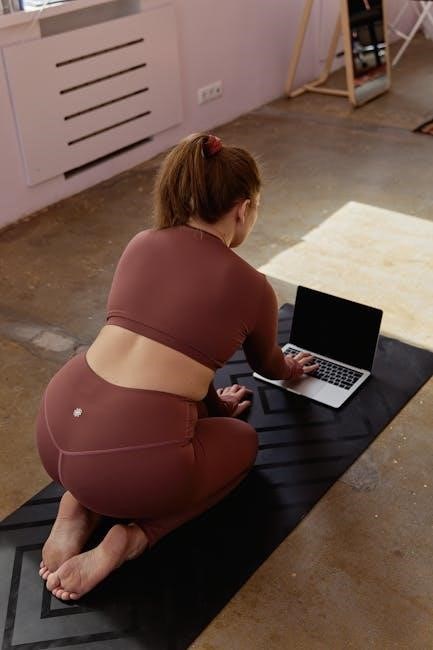Navigating the world of clothing sizes can be surprisingly complex, with inconsistencies impacting shopping experiences. Understanding that sizes vary significantly—even by five inches—is crucial for consumers.
The inherent issues with standard sizing, coupled with phenomena like vanity sizing, often lead to frustration and self-doubt when purchasing garments. It’s a confusing system!
Essentially, letter sizes (S, M, L) offer limited guidance without knowing precise body measurements, highlighting the need for detailed fitting guides and brand-specific charts.

Ultimately, recognizing the limitations of current sizing systems empowers shoppers to prioritize accurate measurements and informed decisions, leading to a better fit and increased confidence.
The Problem with Standard Sizes
The fundamental flaw lies in the historical development of sizing, originating from limited body samples and evolving without a truly universal standard. What should be a straightforward system—where a size 8 consistently represents specific measurements—is, in reality, a chaotic landscape of variation.
This inconsistency stems from the fact that designers create 3D garments from flat fabric, attempting to fit a diverse range of body shapes into a limited number of sizes. The expectation that all size 8 jeans, for example, should share identical measurements is demonstrably false; discrepancies of up to five inches between retailers are common.
Furthermore, the psychological impact of these inconsistencies is significant. Consumers often internalize sizing issues as personal failings—attributing ill-fitting clothes to weight fluctuations—rather than recognizing the problem resides within the sizing system itself. This can lead to negative self-perception and a frustrating shopping experience. The current system often feels designed to make people feel bad about their bodies.
Ultimately, standard sizes are anything but, creating a need for a more reliable and personalized approach to finding the right fit.
Vanity Sizing: A Common Issue
Vanity sizing, a widespread practice in the fashion industry, involves labeling garments with smaller sizes than their actual measurements indicate. While seemingly flattering, this tactic contributes significantly to the confusion surrounding clothing sizes and exacerbates the problems with standard sizing.
The High Street is particularly known for this practice, where a dress that previously fit perfectly might suddenly feel too tight, despite the size remaining unchanged. This isn’t due to bodily changes, but rather a shift in the manufacturer’s sizing standards. It creates a false sense of progress and can be incredibly frustrating for shoppers.

This manipulation of size labels often leads consumers to purchase larger sizes than necessary, perpetuating a cycle of uncertainty and potentially impacting self-esteem. The core issue is that vanity sizing prioritizes sales and perceived customer satisfaction over accurate representation.
Ultimately, vanity sizing undermines the integrity of size charts and reinforces the need for consumers to rely on actual measurements rather than solely on the labeled size.
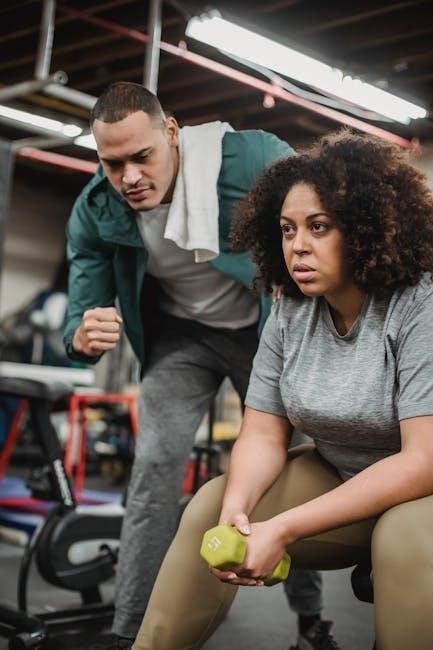
Understanding Body Measurements
Accurate body measurements are paramount for finding well-fitting clothes, surpassing the reliance on often-inconsistent size labels. Knowing your bust, waist, and hip measurements is essential.
These measurements provide a personalized baseline, ensuring a more successful and satisfying shopping experience, regardless of brand or retailer.
Essential Measurements for Women
For women, several key measurements are crucial for determining the correct clothing size. Bust measurement should be taken at the fullest part of the chest, keeping the tape measure level. Waist measurement is best taken at the narrowest part of the torso, typically an inch or two above the belly button, ensuring the tape is comfortably loose.
Hip measurement requires measuring around the fullest part of the hips and buttocks, again keeping the tape measure level. Inseam, important for pants, is measured from the crotch to the desired hem length. Additionally, shoulder width can be helpful for tops and dresses, measured from shoulder point to shoulder point.
Remember to wear minimal clothing during measurement and to have someone assist for accuracy. These measurements are far more reliable than simply relying on a letter size like ‘Medium’ or ‘Large’, as these can vary drastically between brands. Consistent measurement ensures a better fit and reduces the likelihood of purchasing ill-fitting garments.
Essential Measurements for Men
Accurate measurements are paramount when selecting men’s clothing. Chest measurement should be taken at the fullest part, with arms relaxed. Waist measurement is best obtained at the natural waistline, typically just above the navel, ensuring the tape measure isn’t too tight.
Inseam, vital for trousers, is measured from the crotch to the bottom of the ankle. Shoulder width, from shoulder point to shoulder point, is useful for jackets and shirts. Sleeve length, measured from the shoulder point down the arm, is also important for shirts and jackets.
For a precise fit, wear minimal clothing during measurement and ideally, have assistance. These measurements supersede relying on generic sizes like ‘Small’ or ‘Extra Large’ due to significant brand variations. Consistent self-measurement minimizes returns and maximizes the chances of finding clothes that fit comfortably and look their best.
Why Measurements Matter More Than Size Labels
Size labels – S, M, L, or numerical designations – are notoriously inconsistent across brands and even within the same retailer. What constitutes a ‘size 8’ can vary by up to five inches, creating a frustrating shopping experience. Relying solely on these labels often leads to ill-fitting garments and unnecessary returns.
Personal body measurements, however, provide a concrete and reliable basis for finding the right fit. Knowing your chest, waist, hip, and inseam circumvents the ambiguity of standard sizing. This approach acknowledges the unique nature of individual bodies and avoids internalizing fit issues as personal flaws.
Prioritizing measurements empowers consumers to confidently navigate the complexities of clothing sizes, fostering a more positive and efficient shopping experience. It’s about understanding your body, not trying to fit into a size.

Decoding Size Charts
Size charts, while helpful, present challenges. Letter sizes are often vague, and numerical sizes lack standardization. Brand-specific charts are essential for accurate fit, given the wide variations.
Letter Sizes (S, M, L, XL) and Their Limitations
Letter sizes – Small, Medium, Large, and Extra Large – are ubiquitous in the fashion industry, offering a seemingly simple way to categorize clothing. However, their inherent vagueness presents significant limitations for consumers seeking a proper fit. These designations are essentially useless unless correlated with specific body measurements, as a “Medium” in one brand can drastically differ from a “Medium” in another.
The core issue lies in the lack of standardized measurements associated with each letter size. What constitutes a “Medium” bust, waist, or hip is left to the discretion of each individual designer or retailer. This inconsistency forces shoppers to rely heavily on trial and error, often leading to frustration and the internalization of body image concerns when clothes don’t fit as expected.
Furthermore, the broad range encompassed by each letter size means that individuals within the same general size category can experience vastly different fits; This contributes to the feeling that sizing is arbitrary and unpredictable, making online shopping particularly challenging without access to detailed size charts and accurate product information.
Numerical Sizes and Inconsistencies
While numerical sizing (e.g;, size 8, 12, 16) appears more precise than letter sizes, it’s unfortunately plagued by similar inconsistencies. The assumption that a size 8 jean should have standardized measurements – mirroring the logic of 12 inches equaling a foot – simply doesn’t hold true in the fashion world. Variations between retailers can be substantial, with garments labeled the same size differing by as much as five inches in bust, waist, or hip measurements.
This lack of uniformity stems from differing design philosophies, target demographics, and manufacturing practices; A brand catering to a curvier figure might size their garments differently than one focused on a more slender silhouette. Consequently, shoppers often find themselves wearing one size from one brand and a larger or smaller size from another.
The unpredictable nature of numerical sizing contributes to negative shopping experiences and can lead individuals to question their own body shape. It underscores the critical need for consumers to move beyond relying solely on size labels and prioritize accurate body measurements instead.
Brand-Specific Size Charts: A Necessity
Given the widespread inconsistencies in sizing across the fashion industry, relying on brand-specific size charts is no longer a suggestion – it’s a necessity. The frustrating experience of a size Medium fitting perfectly in one store, yet being unwearable in another, highlights this crucial point. Each brand often interprets standard sizes differently, factoring in their unique design aesthetics, target customer, and fabric choices.
Therefore, before making any online or in-store purchase, meticulously reviewing the retailer’s size guide is paramount. These charts typically provide detailed measurements for bust, waist, hips, and inseam, allowing for a more accurate comparison to your own body measurements. Don’t assume sizes are consistent; always verify!
Furthermore, some brands offer more comprehensive fitting advice, including guidance on how to measure yourself correctly and recommendations based on garment style and fabric. Utilizing these resources significantly increases the likelihood of finding clothes that fit well and flatter your figure.

The Impact of Inconsistent Sizing
Inconsistent sizing creates negative shopping experiences and can lead to internalized issues, falsely attributing fit problems to personal body changes rather than variable standards.
Retailers exhibit significant variations—up to five inches—in garment measurements for the same stated size, causing frustration and impacting consumer confidence.
Variations Between Retailers
The frustrating reality of clothing shopping lies in the dramatic discrepancies between retailers’ sizing. What fits perfectly in one store can be entirely unwearable in another, even if both garments are labeled the same size. This isn’t an isolated incident; analysis reveals variations of up to five inches in bust, waist, and hip measurements for a UK size 16 across different brands.
This inconsistency stems from a lack of standardized sizing protocols. Each retailer often operates with its own unique measurement charts and fit philosophies. A size ‘M’ dress in one shop might slip on effortlessly, while the same size from a neighboring store won’t even zip up. This forces consumers to essentially re-evaluate their size with every brand and every style.
The core issue is that designers work from flat fabric, attempting to create coverings for three-dimensional bodies in a limited number of sizes. This inherent challenge, combined with differing target demographics and aesthetic preferences, contributes to the chaotic landscape of clothing sizes. It’s a system ripe for confusion and disappointment.
Psychological Effects of Incorrect Sizing
The impact of inconsistent clothing sizes extends far beyond mere inconvenience; it can significantly affect an individual’s self-perception and body image. Repeated experiences of clothes not fitting as expected often lead to internalizing the “problem” as a personal failing – attributing it to weight gain or loss, even when the issue lies with the garment itself.
Trying on clothes can become a negative experience, fueled by the anxiety of sizes varying wildly between brands and designs. This can trigger feelings of frustration, inadequacy, and even shame. The constant need to second-guess one’s size erodes confidence and can contribute to negative self-talk.
Furthermore, the pressure to conform to arbitrary size standards can be detrimental to mental well-being. It’s crucial to recognize that sizing is a flawed system, and a number on a label doesn’t define one’s worth or body shape. Shifting the focus to fit and comfort, rather than size, is essential for fostering a healthier relationship with clothing and oneself.
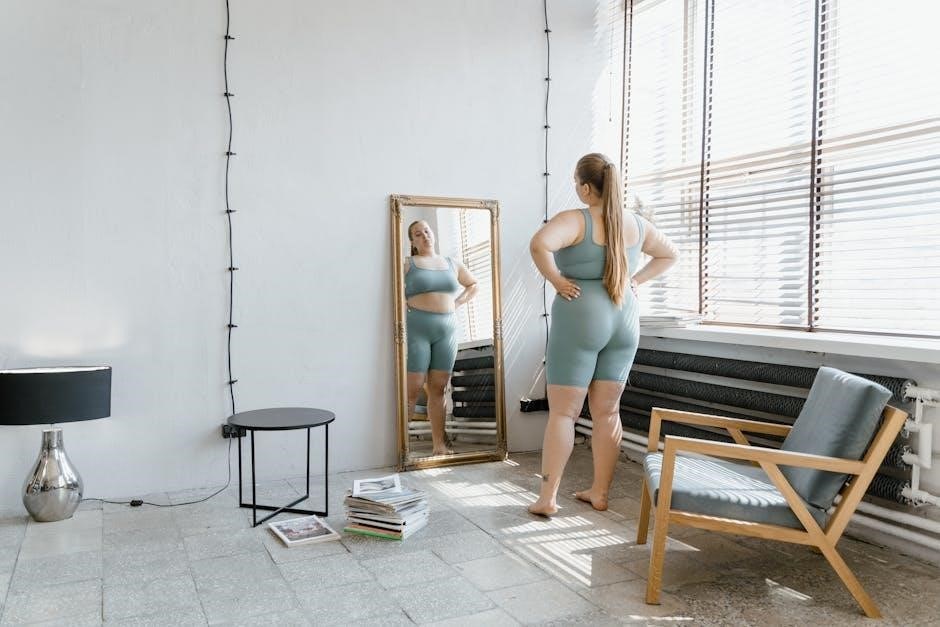
New Approaches to Sizing
Innovative solutions are emerging, including the first global sizing standard designed specifically for transgender women, addressing inclusivity gaps. The future promises more inclusive sizing systems!
These advancements aim to move beyond traditional, limited sizing, offering more accurate and representative fits for diverse body types and identities.
Global Sizing Standards for Transgender Women
Historically, transgender women have faced significant challenges finding clothing that fits well, often forced to choose between ill-fitting garments or expensive tailoring. This stems from the fact that standard sizing is typically based on cisgender male or female body shapes, failing to account for the unique physiques developed through hormone replacement therapy.
Recognizing this disparity, a lingerie designer and a model collaborated to pioneer what is claimed to be the first global sizing standard tailored specifically for transgender women. This groundbreaking initiative involves creating a universal measurement set that accurately reflects the body changes experienced during transition. Clothes makers work from this new measurement set.
The goal is to empower transgender women with access to clothing that affirms their identities and provides a comfortable, flattering fit, eliminating the frustration and emotional distress associated with poorly fitting clothes. This standard represents a significant step towards greater inclusivity and representation within the fashion industry, acknowledging and celebrating the diversity of bodies.
The Future of Inclusive Sizing
The fashion industry is slowly, but surely, moving towards a more inclusive sizing landscape, driven by consumer demand and a growing awareness of body diversity. This evolution extends beyond simply offering a wider range of sizes; it encompasses a fundamental rethinking of how sizing is approached.
Expect to see increased adoption of personalized sizing solutions, leveraging technologies like 3D body scanning and AI-powered fit recommendations. These innovations promise to deliver truly customized garments, minimizing returns and maximizing customer satisfaction. The current system, where a UK 16 varies by five inches, needs to change.
Furthermore, brands are beginning to prioritize transparency in their size charts, providing detailed measurements and clear guidance to help consumers find their perfect fit. The global standard for transgender women is a step in this direction. Ultimately, the future of sizing is about celebrating individuality and empowering everyone to feel confident and comfortable in their clothes.
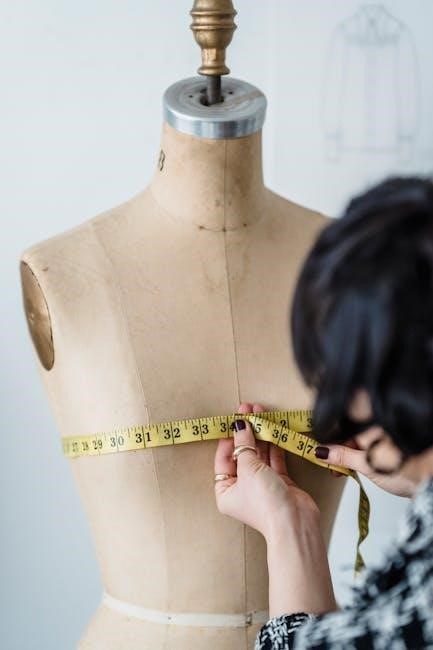
Tips for Finding the Right Fit
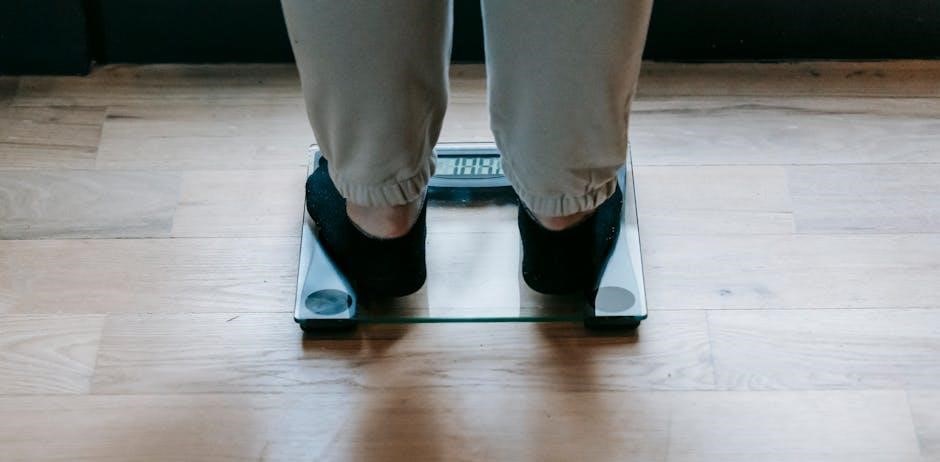
Always prioritize checking the specific size guide for each brand, as sizes vary considerably. Consider fabric and style; don’t hesitate to size up or down for comfort!
Always Check the Size Guide
The most fundamental step in finding the right fit is consistently consulting the size guide provided by each retailer or brand. Dismissing this step is a common mistake, as sizes are demonstrably inconsistent across the fashion industry. What you wear as a Medium in one store might easily be a Large – or even a Small – elsewhere.
These guides typically detail specific body measurements corresponding to their size labels. Don’t rely on your memory of past sizes; measurements can fluctuate, and brands interpret sizing differently. Take the time to accurately measure your bust, waist, and hips, and then compare those figures to the brand’s chart.
Pay close attention to whether the guide specifies measurements for the garment itself or the body. Some guides provide instructions on how to measure correctly, which is incredibly helpful. Ignoring these details can lead to purchasing clothes that don’t fit properly, resulting in frustration and unnecessary returns.
Consider the Garment’s Fabric and Style
Beyond simply checking the size chart, understanding how a garment’s fabric and style influence fit is crucial. Different materials behave differently; stretchy fabrics like knit will conform to your body more than rigid ones like denim or woven cotton. Consider whether the garment is designed to be fitted, relaxed, or oversized.
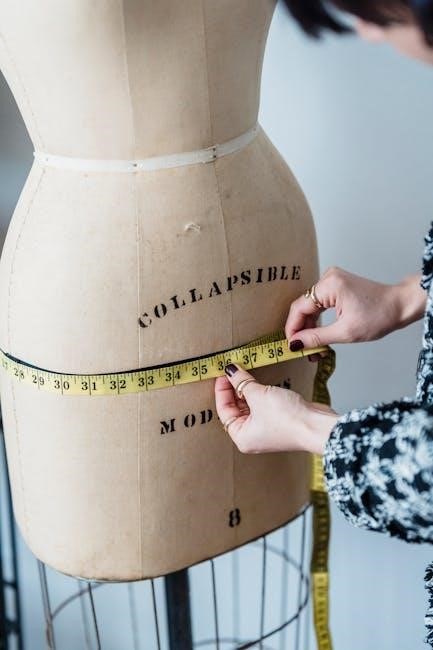
A tailored blazer, for example, will require a more precise fit than a flowy summer dress. Also, think about the garment’s construction. A dress with minimal stretch might necessitate sizing up, while a garment with a defined waist may require accurate waist measurement.
Read the product description carefully for details about the fabric composition and intended fit. Visualizing how the garment will drape on your body type can help you make a more informed sizing decision. Don’t be afraid to read customer reviews for insights into how the garment typically fits.
Don’t Be Afraid to Size Up or Down
The sizing label is merely a suggestion, not a definitive rule. Often, deviating from your usual size is necessary to achieve the perfect fit, especially given the inconsistencies between brands and styles. If you’re between sizes, or if the garment’s fabric has little stretch, consider sizing up for comfort and ease of movement.
Conversely, if a garment feels too loose or lacks structure, don’t hesitate to size down. Remember that alterations are often a viable option to fine-tune the fit, but starting with a slightly larger size provides more room for adjustment.
Internalizing the idea that your body is the constant, and the sizes are variable, can alleviate frustration. Embrace the flexibility to experiment and prioritize how a garment feels rather than fixating on the number on the label. A positive shopping experience relies on confidence and self-awareness!
